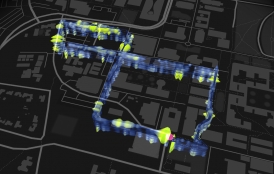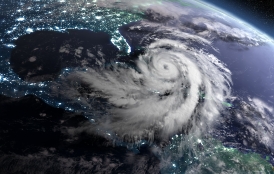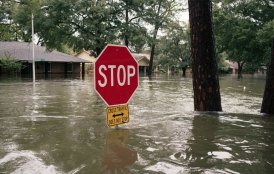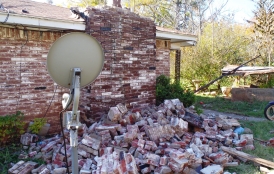The Stanford School of Earth, Energy & Environmental Sciences is now part of the Stanford Doerr School of Sustainability.
This page is currently being maintained for archival purposes only. For the latest information, please visit us here.
Sensory Earth - Screaming Volcanoes
Eric Dunham gets to the bottom of Alaska's screaming volcanoes with the help of audio magnification and 80s hair metal.
By
Miles Traer
<p>Stanford School Of Earth Sciences</p>
November 10, 2014
photo by Cyrus Read, USGS
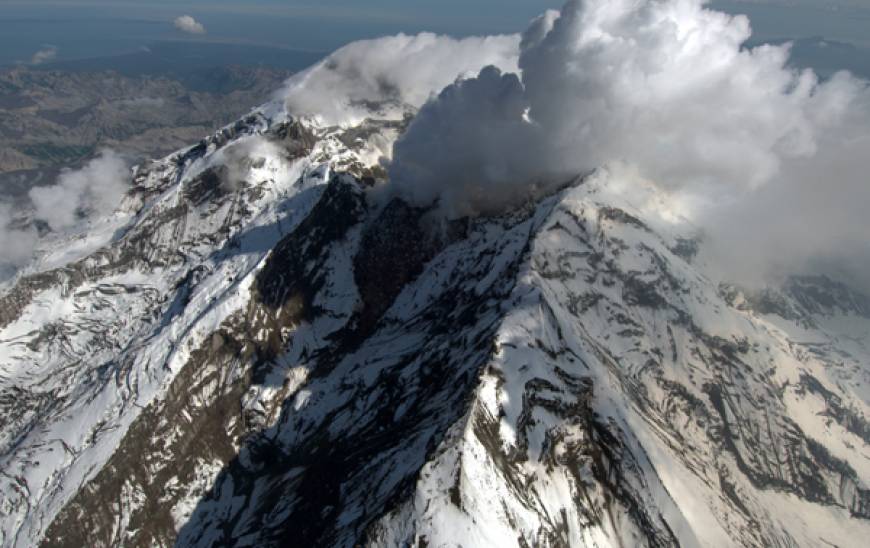
<p>Redoubt volcano, Alaska.</p>
If I were asked what a volcano sounds like, I’d probably make some sort of loud grumble in the back of my throat. I wouldn’t scream. That would be silly. But in Alaska, there’s a volcano that does just that. It screams. And seismologists are listening.
In 2009, the Redoubt volcano in Alaska began to show signs of an imminent eruption. Seismometers, instruments designed to record ground shaking, recorded small tremors reverberating through the volcano and the surrounding Earth. This isn’t unusual before volcanic eruptions. But when geophysicist Eric Dunham converted the seismograms into audio files and sped them up many times so humans could hear them, he discovered something strange.
“At the start of this earthquake swarm there were only a few events per minute,” said Dunham. In the audio recording, these earthquakes register as sharp pops, like a basketball bouncing on the floor. But the tremors became more and more frequent until they were falling on top of one another, smearing together so that the accelerating seismic signal ended up sounding like an elongated scream. Eventually, the guttural roar of the eruption itself finished the audio file:
Here's the scream, isolated for easier listening:
Ok, so “scream” might be a little melodramatic. More like a giant zipper flying open with increasing speed, but still!
Even more puzzling than the scream, all sound stopped just before the volcano erupted and spewed ash tens of kilometers into the air. “We were getting 20 to 30 earthquakes per second, then we got 30 seconds of silence,” Dunham said. “We thought, 'Wow, there's something really interesting happening here’ - something is driving this system incredibly rapidly.”
Even to Dunham, who builds sophisticated mathematical models to investigate volcanic eruptions, earthquakes and tsunamis, this behavior was peculiar. Perhaps it was some strange behavior of the magma causing this.
Researchers at the Alaska Volcano Observatory and at the University of Washington asked Eric Dunham to model what was going on inside the volcano to produce the basketball pops, the “screams,” and the puzzling 30 seconds of silence. Dunham and his colleagues determined that the tremors resulted from rapid slipping of many small faults buried underneath the volcano, caused by super-pressurized, molten, gassed-up rock.

Pictured: gassed-up rock. But not the kind we're talking about here.
As the pressure built, so did the stress within the fault until friction gave way and the fault slipped, creating the tremor. But as the pressure continued to increase, the fault slipped more and more frequently, producing the scream. Eventually, the pressure was so high that the fault slipped continuously, generating the 30 seconds of silence, right before the volcano erupted. “This particular type of tremor has rarely been reported, but I wouldn't be surprised if it might be seen in other eruptions too,” said Dunham.
“The next time Redoubt erupts, people will be looking for these screams,” Mike West, director of the Alaska Earthquake Information Center at the University of Alaska, told NBC News. By listening to the volcano, scientists might better predict volcanic eruptions.
The screams might well sound a literal and figurative siren to warn those nearby.
Eric Dunham is an Assistant Professor of Geophysics at Stanford's School of Earth Sciences and an affiliated faculty member with the Institute for Computational and Mathematical Engineering.





